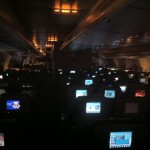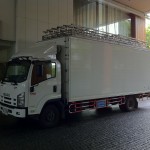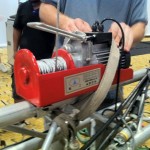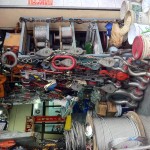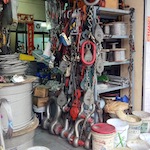Squint Abroad: International Event Production, A Fresh Perspective
Let’s start from the beginning. I work for a live event production company based out of Indianapolis, Indiana. One of our clients is staging their annual general managers conferences around the world, and has been kind enough to ask us to leave the US borders and come with them. Our first stop is in Bangkok, Thailand. We left on the 28th of February, and returned to the States on March the 11th.
The flight(s) from the US, specifically Chicago, to Asia are forever long. I have to believe that the country is pretty much as distant from the Midwest as any could be. After a 14 hour flight from Chicago to Incheon, South Korea, we boarded a five hour flight to Bangkok. After a brief stint at customs, our crew of 15 was on it’s way to our home for the next two weeks; the Millennium Hilton Bangkok.
So that’s the surrounding story, but let’s be honest with ourselves. You came to iSquint.net to hear about event production technology. The truth of the matter is that while production gear is hardly scarce in this country, it can be incredibly expensive to rent for any short period of time. After choosing a gear provider and looking over the associated rental costs, we determined it would be more cost effective and reliable to ship our video equipment from the US. This particular show design calls for eight 16′ x 24′ projection surfaces surrounding the room. It creates the effect that you are in a 16′ tall octagon, with video painted seamlessly across all surfaces.
Lighting Gear
The lighting team was able to get their hands on a number of Martin Mac 2k’s, as well as multiple unbranded non-moving head LED fixtures to use as uplighting. It should hardly have been a surprise that all of the Martin gear arrived in PRG branded cases. Those guys truly are everywhere. Front light for the stage came in the form of what appeared to be brand new Phillips Selecon series fixtures. Everything was controlled by an Avolites Pearl console.
Video Gear
As mentioned above, we were able to ship all of the video equipment from the United States. Projection included a mix of four Panasonic 10k HD projectors and four Christie 10k HD’s. These pieces of equipment are available in Thailand, but the cost of renting 8 of the 20 available HD’s in the country is quite a bit higher than we were comfortable with. All screens were fed with a brand new Lenovo laptop running the Dataton Watchout’s most recent software release. We have been using Watchout a lot lately on shows, and despite a few fall set backs, we have had a lot of luck with the system. It has certainly given us the ability to create visual effects that cannot be easily mastered with tape decks alone.
Power
The power situation in the hotel ballroom was less than perfect, but they staff worked to make sure we were able to hook up our equipment without seeing the magical blue smoke. While the solution was a little scary looking, the equipment worked perfectly all week. Thailand runs on the 240V, 50Hz standard, where as your standard American Edison outlet hovers somewhere around 120V at 60Hz. Fortunately most of our gear, projectors aside, could automatically sense and handle the switch. To be safe, we ended up placing all of the video equipment on 120V, 60Hz service.
- The Journey
- Production Equipment Arrival
- Power Transformers
- Winch Hoist
- Watchout Production Setup
- Rigging Supply Shop
We have a week and a half back in Indiana to regroup, after which we will be taking the same corporate show to Istanbul, Turkey. Stay tuned for more stories, equipment discussions, and tips/tricks for international event production in the near future.
TheatreFace.com is Reviewing SeaChangers Nemo & Tungsten Fixture – Ask Your Questions NOW
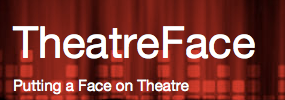 Jacob Coakley, the Editor of Stage Direction Magazine started up a website almost a year ago for us theatre folks called TheatreFace.com. As you might be able to tell from the site name, it is where theatre people can come together and talk about what we know and love… THEATRE! Think of TheatreFace as that other social networking site that everyone is on, but just for us and minus Mafia Wars and Farmville, (THANK GOODNESS!). Although, I would like to see Theatre Wars or Stagecraftville, that might be fun!
Jacob Coakley, the Editor of Stage Direction Magazine started up a website almost a year ago for us theatre folks called TheatreFace.com. As you might be able to tell from the site name, it is where theatre people can come together and talk about what we know and love… THEATRE! Think of TheatreFace as that other social networking site that everyone is on, but just for us and minus Mafia Wars and Farmville, (THANK GOODNESS!). Although, I would like to see Theatre Wars or Stagecraftville, that might be fun!
One neat thing that TheatreFace has done is organized gear reviews. Month long gear reviews! What happens is each month, a member of Theatre Face is sent a product to review. The user puts it through some test and does everything they can think of to learn everything about the product. They post their finds, but it doesn’t stop there. The entire community on TheatreFace is called in and asked for their questions, test and anything else they can think of to learn more about the fixture. How cool is that???
This months product that TheatreFace is reviewing is the SeaChanger plasma light fixture, the Nemo and the SeaChanger Tungsten Wash Fixture. Stephen Ellison is leading the charge on this one and is asking for your questions, and test that you would like to see performed on the fixtures. If you have ever wondered if these fixtures could do something, I HIGHLY encourage you to head over to TheatreFace.com and add your questions to the discussion. The more we collaborate on these reviews, the more we all benefit and learn more about the products.
If you are not a TheatreFace member yet, don’t worry, registering for the site is a “Painless Process” and of course is FREE! Thanks Jacob for this great review process! Love the site and of course I heart Stage Directions!
Book: Intelligent Lighting: A Curriculum in Entertainment Technology
 I received an email on Monday about a new out there on the market for our industry called, Intelligent Lighting: A Curriculum in Entertainment Technology by Matthew Haber. The book was actually released on June 14, 2010 and published by CreateSpace, an Amazon Company.
I received an email on Monday about a new out there on the market for our industry called, Intelligent Lighting: A Curriculum in Entertainment Technology by Matthew Haber. The book was actually released on June 14, 2010 and published by CreateSpace, an Amazon Company.
Here is a bit more from the jacket:
Intelligent Lighting: A Curriculum in Entertainment Technology is the first ever textbook for secondary school and university level classes on intelligent lighting. Written by the Author with the contributions of various industry partners and professionals, this book covers topics including moving lights, media servers, light board programming, LED fixtures, scrollers, and communications protocols. This publication is designed to excel equally as an all around reference guide for students and professionals alike as well as a textbook for technical theatre education. In addition to full color photographs and informative sidebars, Intelligent Lighting: A Curriculum in Entertainment Technology includes a handy glossary of technical terms, chapter review questions, and a book long design project.
Right now, Amazon.com is running discount on the book with a 22% discount off the retail price of $49.98 for $39.20. Head over to amazon.com to pick up a copy of Intelligent Lighting: A Curriculum in Entertainment Technology.
The RSC Lightlock Wins ESTA Rock Our World Award
 When I read that title, it made me think a minute… Isn’t the Lightlock suppose to do the opposite, keep our world from rocking? Stupid joke, sorry. But honestly, Doesn’t the RSC Lightlock deserve almost every award out there? How did a mover live front of house on a hung pipe with out this? Those fellas at RSC are genius, thanks for the Lightlock and congrats guys! Here is more from the Press Release:
When I read that title, it made me think a minute… Isn’t the Lightlock suppose to do the opposite, keep our world from rocking? Stupid joke, sorry. But honestly, Doesn’t the RSC Lightlock deserve almost every award out there? How did a mover live front of house on a hung pipe with out this? Those fellas at RSC are genius, thanks for the Lightlock and congrats guys! Here is more from the Press Release:
The annual ESTA Dinner and Awards Ceremony was the setting for the RSC Lightlock to receive its most recent accolades from entertainment industry leaders. Nominated in the best new product category for ESTA’s Rock Our World Awards, the RSC Lightlock was chosen as the product which had the greatest impact on our industry in the last year.
The RSC Lightlock is a motion stabilizing device for moving head lighting fixtures, allowing them to be installed with a minimum of rigging equipment, removing the need for battens or trusses in the system. Its stabilization also allows the RSC Lightlock to be used with pantographs and motorized battens without the inherent movement caused by the moving head fixtures.
In its third year, this Rock Our Worlds program has no real rules. The panel of judges, some of the best known people in our industry, has sole discretion on the number of awards to bestow and the categories to use. This year’s judges included Seth Jackson, Tom McPhillips, Bill Sapsis, Brad Schiller, and Jim Tetlow. This group saw fit to select the RSC Lightlock from a group of nominees which included products and projects such as the RevEAL LED Color Wash, the Dee and Charles Theatre build, the chandelier install at the Margot and Bill Winspear Opera House, and the Shanghai Expo Opening Ceremony. To be named one of the winners for this year’s award demonstrates how revolutionary the RSC Lightlock truly is.
Learn more about the RSC Lightlock by visiting their website at www.rsclightlock.com or the US distributor, Total Structures website at www.totalstructures.com.
ESTA Summer Edition of Protocol Journal is Out
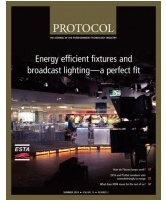 Are you a technology freak like me? I love technology in our industry. It seems that every time you turn around, something new and exciting is happening in our industry that can make our lives easier and give us control and design options never though of before. The ESTA Journal, Protocol is a great resource for any tech head out there. I have been reading Protocol ever since I heard about it eight years ago. Each quarter when it shows up in my mailbox, I get super excited and read it cover to cover as quick as possible. Then I come back and re-read articles again and again to make sure I didn’t miss anything. There is ALWAYS a great column by Mike Wood, Out of the Wood that covers some sort of lighting technology or product review. This month was no disappointment, How do Plasma Lamps Work? I had a rough idea, but Mike broke it down and now, I have a great understanding of the technology. This is just one of the great articles in the journal.
Are you a technology freak like me? I love technology in our industry. It seems that every time you turn around, something new and exciting is happening in our industry that can make our lives easier and give us control and design options never though of before. The ESTA Journal, Protocol is a great resource for any tech head out there. I have been reading Protocol ever since I heard about it eight years ago. Each quarter when it shows up in my mailbox, I get super excited and read it cover to cover as quick as possible. Then I come back and re-read articles again and again to make sure I didn’t miss anything. There is ALWAYS a great column by Mike Wood, Out of the Wood that covers some sort of lighting technology or product review. This month was no disappointment, How do Plasma Lamps Work? I had a rough idea, but Mike broke it down and now, I have a great understanding of the technology. This is just one of the great articles in the journal.
I highly recommend heading over to ESTA web site and subscribing to the Protocol Journal. The print subscription is FREE to anyone. Since it is FREE, I would like to make a suggestion, consider donating a bit to the ESTA Foundation’s, Behind the Scenes in return. ESTA is putting out a great journal each quarter and ask nothing in return. I on the other hand implore you to donate what ever you can to show your thanks. Good karma will come your way. ;)
If you are a green freak and want to save the plant by not getting the printed edition, you can read the Protocol Journal online through the ESTA web site as well.
This Isn’t Your Grandma’s Cardboard Shipping Box
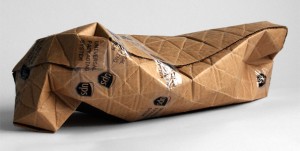 In the not so distant future, we’ll be saying, “remember when cardboard boxes were square or rectangular?”. Designer Partick Sung has developed a new type of shipping….”container”, a flat piece of recycled corrugated cardboard called the Universal Packaging System or UPS. No, it is not from that UPS, but the logo is pretty close and threw me off at first.
In the not so distant future, we’ll be saying, “remember when cardboard boxes were square or rectangular?”. Designer Partick Sung has developed a new type of shipping….”container”, a flat piece of recycled corrugated cardboard called the Universal Packaging System or UPS. No, it is not from that UPS, but the logo is pretty close and threw me off at first.
The design of the sheet of cardboard has groves in it to help make folding the sheet around almost anything you can think of. Since the cardboard would conform to the shape of the item you are packing, there would be less space and less wasted material. My main concern would still be padding and security of the item with in. Can you imaging a moving light being shipped in the UPS box? It would look a little funny at first I think.
What do you think? Think Patrick Sung has a good idea? I would love to hear what you think in the comments of this article.
Thanks Yanko Design!
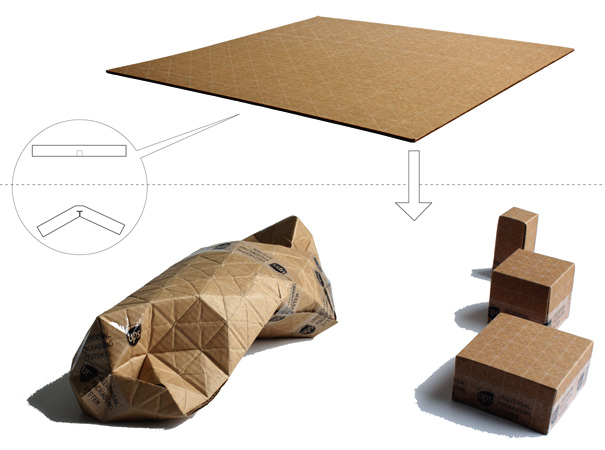
Review: One Week With the iPad
After using the iPad for a solid week now, it has really changed my work flow both here on iSquint and in my personal life. I have been pleasantly surprised how well the iPad is able to keep me connected not only via email, but also Twitter and the ability to write on the site via the word press app. I’ll speak more about that in a moment. As for the personal life, the iPad has become my device of choice for simple things in life such as google searches and quick updates view the multitude of apps available not only for the iPad but also for the iPhone.
Let’s begin with the design of the iPad. The screen is super bright, so bright that I have found that I keep it at half of it’s full brightness regardless of inside or outside in the sun. In either case, the screen is plenty bright to see and function.
One thing that I do love about the iPad is the ability to lock the position of the iPad’s viewing angle. I have found that I love working on the iPad in landscape mode. Not only does it give me a larger keypad, but in certain apps, like say mail, my inbox is always visible off to the left. That also holds true for some of the apps that have been specifically developed for the iPad.
Speaking of the keyboard, I mentioned in the unboxing write up about how the landscape mode displays a larger keyboard that is about the same size as the smaller USB or Bluetooth keyboard that apple offers for their mac’s. I have even found the familiar auto correction found in the iPhone functions just as expected and has already begun to recognize words that I am typing along with common words that I use over and over. Something that isn’t found on the iPhone but on the iPad is spell correction. If you miss spell a word that auto correction doesn’t catch, just like on a mac, you can easily see a red line under the word and hold down on that word and get a listing of words that might be correct.
Enough of my love affair so far with the iPad, what about the lighting apps?! All of my lighting apps transferred over to the iPad just fine. Since the screen is larger, Apple has given us the option to zoom in on the iPhone apps on the iPad. You can also view them in the normal size from the iPhone, but there is a bunch of wasted space. What I am a little disappointed in is the rendering of the entire app, even the UI native from the iPhone when zoomed in on the iPad. Every iPhone app running on the iPad zoomed in is pixelated and not so elegant as if running on the iPhone. You would have thought that at least the native UI elements such as the keyboard on the iPad would be correctly re-sized, but no. It really is not a huge deal, but still a little disappointing.
To help put your nerves to rest, I have talked with a number of Lighting App developers and from what little I am allowed to mention, all I can say is be prepared! We have already seen a screen shot of Synthe FX next app that will run native on the iPad and not just the iPhone app running on the iPad. It will take some time for lighting app developers to port their iPhone apps to run natively on the iPad, so don’t hold your breath for anything any time soon, but they are working on it.
Over all, I am loving the iPad, it has a long battery life, excellent screen resolution and is quite pleasant to hold in one hand. As an early adopter, I am loving the freedom that the iPad is giving me. I find that I am not pulling out the MacBook more and more for simple searches, web surfing and writing on the site. It is a mildly large investment depending on what version of the iPad you are looking at, but it might just change the way you look at mobile computing.
As for not waiting for the iPad 3G version, I am very happy with my choice of going with just the WiFi version. Yes, it is a slight pain to wait for the Sprint MiFi to boot up and connect and then only lasting about 4-5 hours, but thus far it has been working like a champ. Working off a MiFi is just like being connected to any WiFi like my home or office network and always available where ever I am.
One negative about the iPad is I am finding that when I switch back to the MacBook or the MacPro, I keep wanting to touch the screen just like on the iPad. I have really become accustomed to just touching what I want rather then relying on a mouse. It’s just something I have to remember where I am and what I can touch and not touch!
Update: Looks like i trusted auto correction a little too much! Thanks for the typo catches Mark!
One Week with the iPad
[nggallery id=40]
LatestHeadlines
- Upgrading Your Toolbox: City Theatrical DMXcat-E and DMXcat Multi Function Test Tool
- Claypaky Bringing Back the Sexy to Par Cans with the Midi-B FX
- Ayrton Evolves the Cobra, the Cobra2 Developed for the US Market
- MA Lighting Intros grandMA3 onPC Fader Wing and DIN-Rail Nodes
- Live Events LEVL Up Fest: A Festival to Aid our Industry
